Expanded Polystyrene Density refers to the mass per unit volume of Expanded Polystyrene (EPS) foam. In simpler terms, it measures how much mass is packed into a certain volume of EPS foam material.
This density measurement is crucial because it impacts various properties of the foam, including its strength, insulation capabilities, and suitability for different applications.
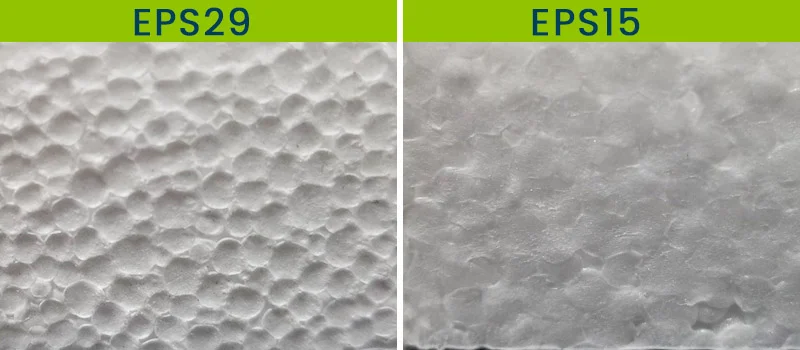
What is Expanded Polystyrene Density?
Expanded Polystyrene Density is the measure of how much mass is contained within a given volume of Expanded Polystyrene (EPS) foam material. It essentially tells us how densely packed the foam is, which affects its strength, insulation properties, and its suitability for various applications.
Understanding EPS Foam Density:
| Density (pcf) | Stress @ 10% Compression (psi) | Flexural Strength (psi) | Tensile Strength (psi) | Shear Strength (psi) |
| 1 | 13 | 29 | 31 | 31 |
| 1.5 | 24 | 43 | 51 | 53 |
| 2 | 30 | 58 | 62 | 70 |
| 2.5 | 42 | 75 | 74 | 92 |
| 3 | 64 | 88 | 88 | 118 |
| 3.3 | 67 | 105 | 98 | 140 |
| 4 | 80 | 125 | 108 | 175 |
Expanded Polystyrene Density kg/m³
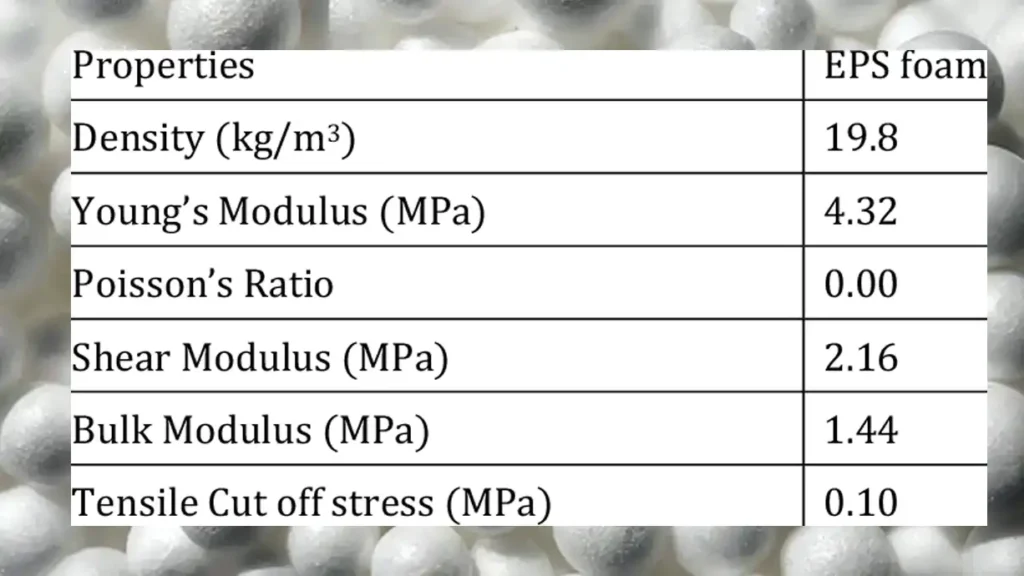
Expanded Polystyrene (EPS) density, typically measured in kilograms per cubic meter (kg/m³), refers to the mass of expanded polystyrene material per unit volume.
The density of expanded polystyrene (EPS) typically ranges from around 10 kg/m³ for very lightweight insulation to over 40 kg/m³ for high-density insulation or structural applications. EPS density can vary depending on factors such as the manufacturing process and specific application requirements.
EPS is a lightweight, rigid, plastic foam insulation material produced from solid beads of polystyrene. When heated with steam, these beads expand to form a closed-cell structure with low density.
The density of EPS is an important characteristic that influences its insulation properties, strength, and durability. Generally, EPS with higher density tends to have better insulation properties and higher compressive strength, making it suitable for applications where greater structural integrity and thermal resistance are required.
EPS density can vary depending on the manufacturing process and the specific application requirements. Common densities for EPS range from around 10 kg/m³ for very lightweight insulation to over 40 kg/m³ for high-density insulation or structural applications.
Knowing the density of EPS is crucial for selecting the appropriate material for a given application, ensuring optimal performance and cost-effectiveness. Higher-density EPS may be preferred for applications such as insulation in buildings or packaging for fragile items, while lower density EPS may be suitable for applications where weight reduction is a priority, such as in lightweight packaging or cushioning materials.
Expanded Polystyrene Production Process for different Densities
| Density | Production Process |
| Low | Expandable polystyrene (EPS) beads are pre-expanded using steam, then placed in a mold and exposed to additional steam to fully expand and fuse the beads together. The molded EPS blocks are then cooled, trimmed, and stored for further processing. |
| Medium | Similar to low-density EPS production, but with adjustments in steam pressure and processing time to achieve the desired density. The pre-expanded beads are subjected to higher pressures and longer molding times to create a denser foam structure. |
| High | High-density EPS production involves a more controlled expansion process with precise steam conditions and mold temperatures. The pre-expanded beads undergo multiple stages of molding and cooling to achieve a tightly compacted foam structure with enhanced strength and durability. |
High Density EPS Foam
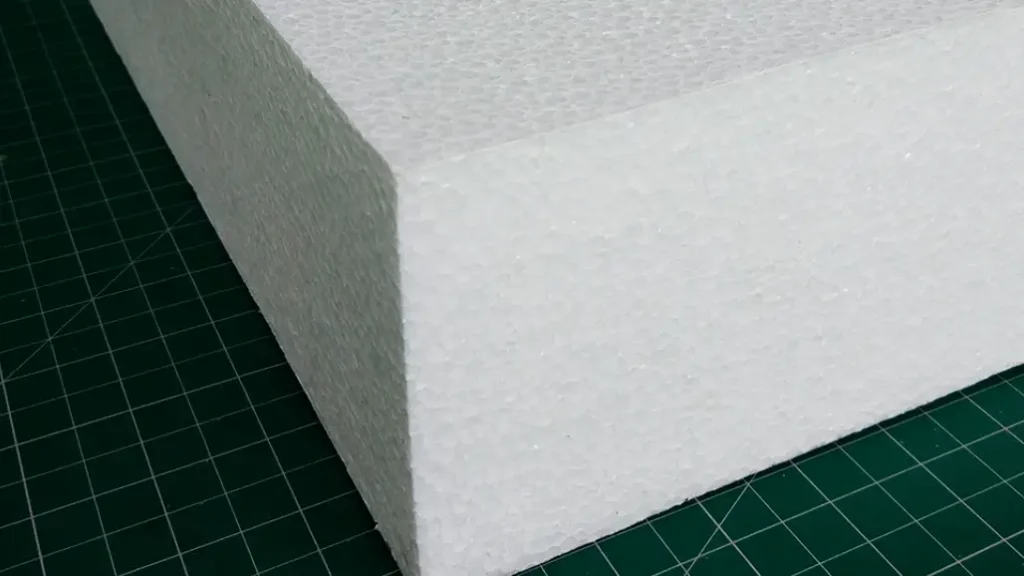
High-density EPS foam is a type of Expanded Polystyrene (EPS) foam that offers several advantages over regular EPS foam:
Increased Strength: Regular EPS foam is known for its lightweight and airy structure. High-density EPS packs more material into the same volume, resulting in a sturdier and more rigid foam. This makes it suitable for applications requiring more load-bearing capacity.
Improved Durability: The denser structure of high-density EPS foam also enhances its durability. It can withstand greater impacts and compression forces without breaking or deforming as easily as regular EPS.
Enhanced Resistance: High-density EPS offers better resistance to moisture absorption compared to regular EPS. This makes it a good choice for applications where exposure to water or humidity is a concern.
Applications: Due to its increased strength, durability, and moisture resistance, high-density EPS finds applications in various fields, including:
- Construction: As roof insulation panels, under-slab insulation, and formwork for concrete.
- Packaging: For protecting heavy or fragile items during transport.
- Industrial Applications: As components in buoyancy tanks, boat hulls, and specialized molding applications.
Here are some additional points to consider:
- High-density EPS may have a slightly higher cost compared to regular EPS due to the increased material used in its production.
- The denser structure can also make it slightly heavier than regular EPS. However, this weight gain is often negligible compared to the benefit of its increased strength and durability.
High-density EPS offers a valuable alternative for applications requiring a stronger, more durable, and moisture-resistant EPS foam solution.
Importance of Expanded Polystyrene Foam Density
Expanded Polystyrene (EPS) density plays a crucial role in determining the performance, functionality, and suitability of EPS products for various applications. Understanding the importance of EPS density is essential for making informed decisions in product design, manufacturing, and usage.
Here are some key reasons why EPS density matters:
1. Thermal Insulation Properties: The density of EPS directly affects its thermal insulation capabilities. Higher-density EPS typically offers better insulation performance due to its reduced porosity and increased material density. This makes high-density EPS ideal for applications requiring superior thermal insulation, such as building insulation and cold storage.
2. Compressive Strength: EPS density influences its compressive strength, which is crucial for supporting structural loads and withstanding external pressures. Higher-density EPS exhibits greater compressive strength, making it suitable for applications where durability and load-bearing capacity are essential, such as foundation insulation and civil engineering projects.
3. Dimensional Stability: EPS density impacts its dimensional stability, or the ability to maintain shape and size under varying environmental conditions. Higher-density EPS tends to have lower dimensional changes, making it more resistant to deformation and warping over time. This makes high-density EPS desirable for applications requiring precise dimensional accuracy, such as architectural molding and packaging.
4. Impact Resistance: The density of EPS also affects its impact resistance, with higher-density foams typically offering greater resistance to impact and mechanical stress. This makes high-density EPS ideal for protective packaging applications where shock absorption and product safety are paramount.
5. Water Absorption: EPS density influences its susceptibility to water absorption, with lower-density foams being more prone to moisture ingress. Higher-density EPS exhibits lower water absorption rates, making it suitable for outdoor applications or environments with high humidity levels.
6. Cost and Material Efficiency: The choice of EPS density can impact production costs and material efficiency. While higher-density EPS may offer superior performance, it often comes at a higher cost due to increased material usage and manufacturing complexity. Lower-density EPS, on the other hand, may provide a more cost-effective solution for less demanding applications.
The density of Expanded Polystyrene (EPS) is a critical parameter that influences its thermal insulation properties, compressive strength, dimensional stability, impact resistance, water absorption characteristics, and cost-effectiveness. By understanding the importance of EPS density, manufacturers and end-users can make informed decisions to select the most suitable EPS products for their specific requirements.
Factors Affecting Expanded Polystyrene Density
Several factors influence the density of Expanded Polystyrene (EPS), affecting its properties and suitability for various applications. Understanding these factors is essential for optimizing EPS production and achieving desired material characteristics. Here are the key factors affecting EPS density:
1. Raw Material Properties: The characteristics of the polystyrene resin used as the raw material for EPS production significantly impact the final foam density. Properties such as molecular weight, polymer distribution, and melt flow index of the resin influence the expansion and foaming behavior during the manufacturing process.
2. Expansion Process Parameters: The parameters of the expansion process, including steam pressure, temperature, dwell time, and agitation, play a crucial role in determining EPS density. Higher steam pressures and temperatures lead to increased expansion and lower foam density, while lower pressures and temperatures result in denser foam with higher density.
3. Bead Size and Shape: The size and shape of the EPS beads used in production affect foam density. Smaller bead sizes tend to produce denser foam, as they pack more tightly together during the expansion process. Similarly, a uniform bead shape promotes uniform expansion and helps maintain consistent foam density.
4. Molding Conditions: The conditions during the molding stage, such as mold temperature, pressure, and cycle time, influence EPS density. Higher mold temperatures and pressures typically result in denser foam with reduced cell size and higher material density. Longer molding cycle times may also contribute to increased foam density by allowing for more complete fusion and consolidation of the beads.
5. Chemical Additives: The inclusion of chemical additives, such as blowing agents, nucleating agents, and flame retardants, can affect EPS density. Blowing agents generate gas bubbles during the expansion process, contributing to foam density reduction. Nucleating agents control cell size and distribution, impacting foam structure and density. Flame retardants may alter the foaming behavior and final density of EPS.
6. Ambient Conditions: Ambient conditions, such as humidity and air temperature, can influence EPS density during production. High humidity levels may affect the expansion and curing process, leading to variations in foam density. Control of ambient conditions is essential to ensure consistent foam quality and density.
7. Quality Control Measures: Implementation of quality control measures throughout the manufacturing process is critical for maintaining consistent EPS density. Monitoring and adjusting process parameters, conducting regular testing and inspection of raw materials and finished products, and adhering to strict quality standards help ensure uniform foam density and product performance.
In summary, the density of Expanded Polystyrene (EPS) is influenced by a combination of factors, including raw material properties, expansion process parameters, bead size and shape, molding conditions, chemical additives, ambient conditions, and quality control measures. By understanding and optimizing these factors, manufacturers can produce EPS with the desired density and properties for specific applications.
Expanded Polystyrene Production Equipment
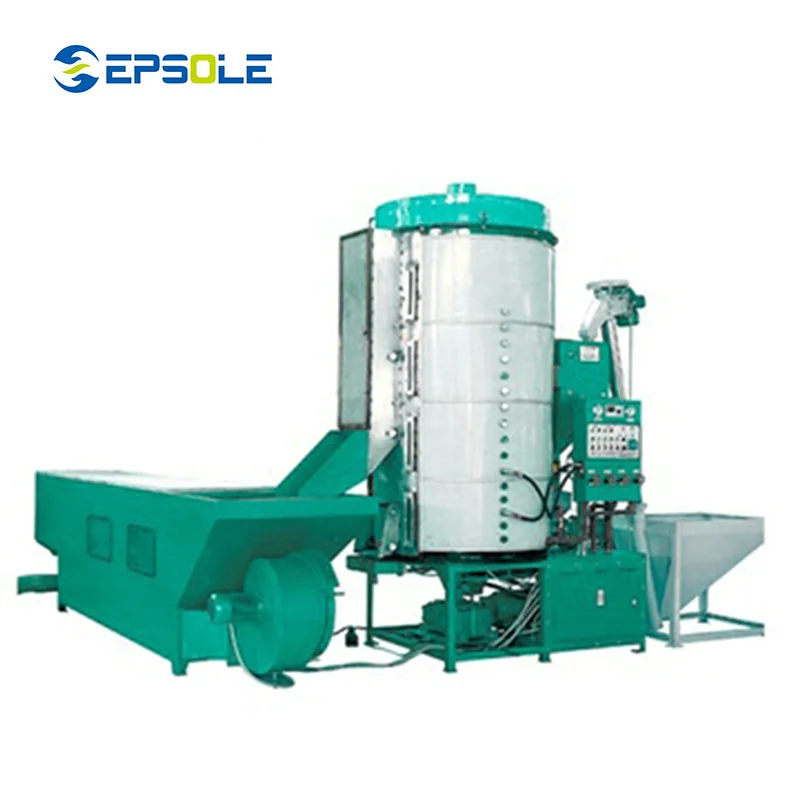
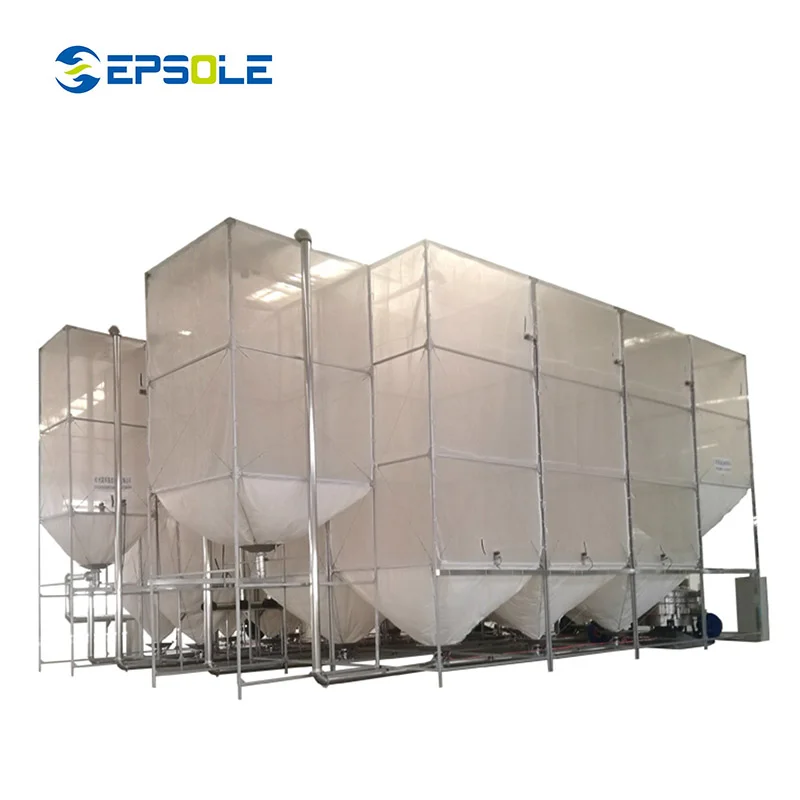

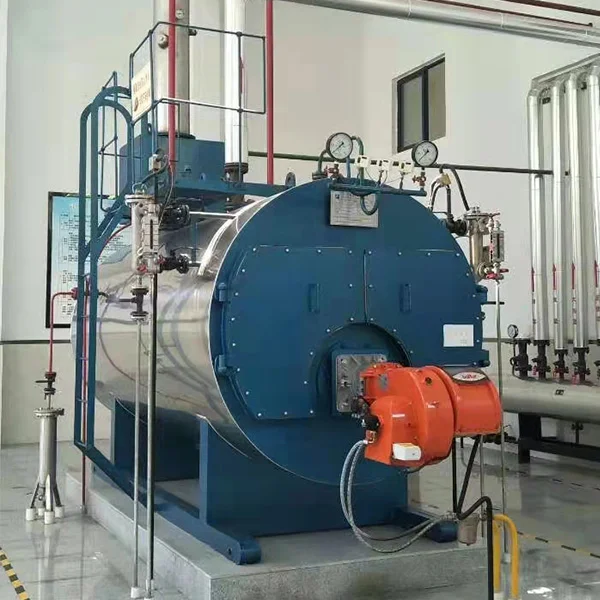

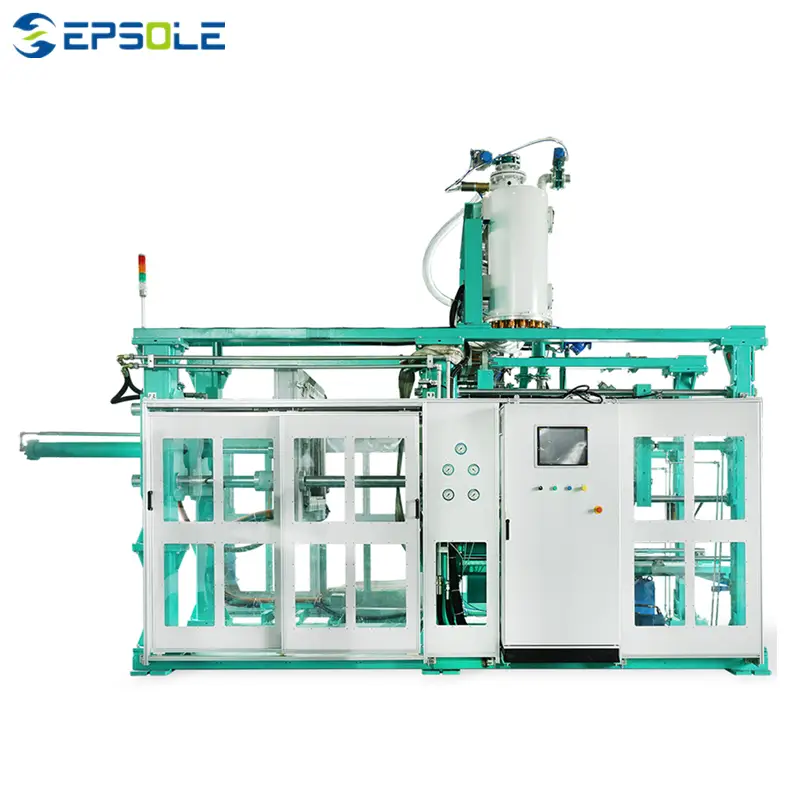

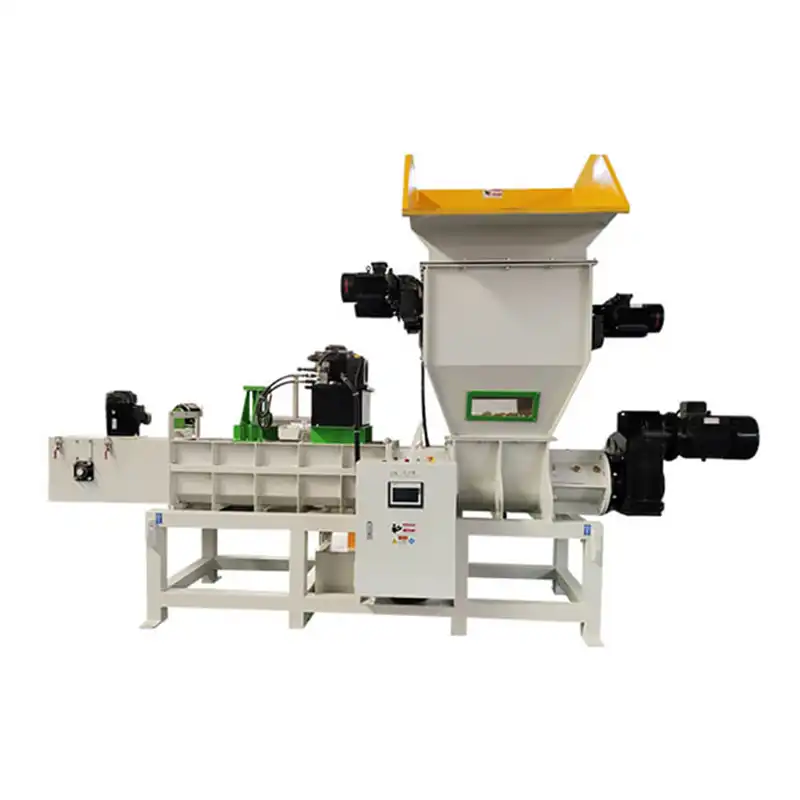
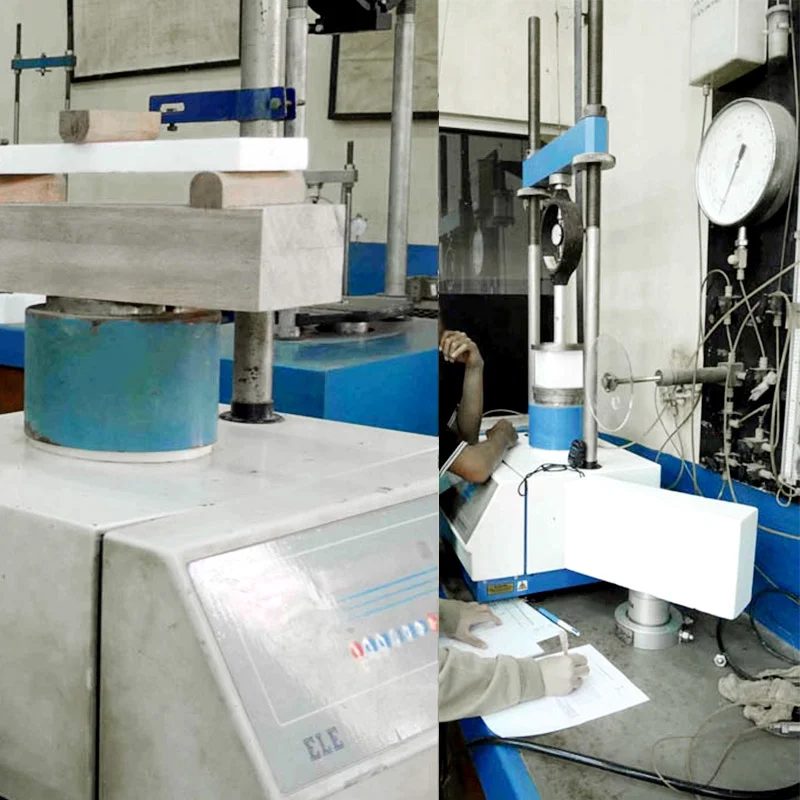
Expanded polystyrene (EPS) production involves several key machines and equipment that are essential for different stages of the manufacturing process.
Here are some of the machines commonly used in EPS production:
EPS Pre-expander: The pre-expander is a machine used to expand polystyrene beads by applying steam heat. It controls the temperature and steam pressure to achieve the desired expansion ratio and density of the beads.
EPS Aging Silos: After pre-expansion, the expanded beads are transferred to aging silos where they are stored for some time. Aging allows the expanded beads to stabilize and reach equilibrium moisture content before further processing.
EPS Molding Machine: Molding machines are used to shape the expanded beads into final products such as blocks, sheets, or custom molds. These machines apply heat and pressure to the beads to fuse them and form a solid structure.
EPS Steam Chest/Boiler: Steam chests or boilers are used to generate steam, which is an essential component of the EPS production process. Steam is used for the pre-expansion of the beads, molding, and shaping operations.
EPS Cutting Machine: Cutting machines are used to cut molded EPS blocks or sheets into specific dimensions and shapes. These machines can utilize hot wires, saw blades, or other cutting methods depending on the requirements of the final product.
EPS Shape Molding Machine: Shape molding machines are used to produce EPS products with complex shapes and contours. These machines use molds to shape the expanded beads under heat and pressure, resulting in detailed and precise finished products.
EPS Cooling System: After molding or shaping, EPS products need to be cooled down to solidify and stabilize their structure. Cooling systems, such as air or water cooling, are employed to rapidly reduce the temperature of the molded EPS products.
EPS Recycling Equipment: EPS production often generates waste materials that can be recycled and reused. Recycling equipment, such as shredders and compactors, are used to process EPS scrap into reusable pellets or materials for future production cycles.
Quality Control Equipment: Various quality control equipment, including density meters, thermal conductivity testers, and dimensional measurement tools, are used to ensure that the produced EPS foam meets the required specifications and standards.
High Density Expanded Polystyrene
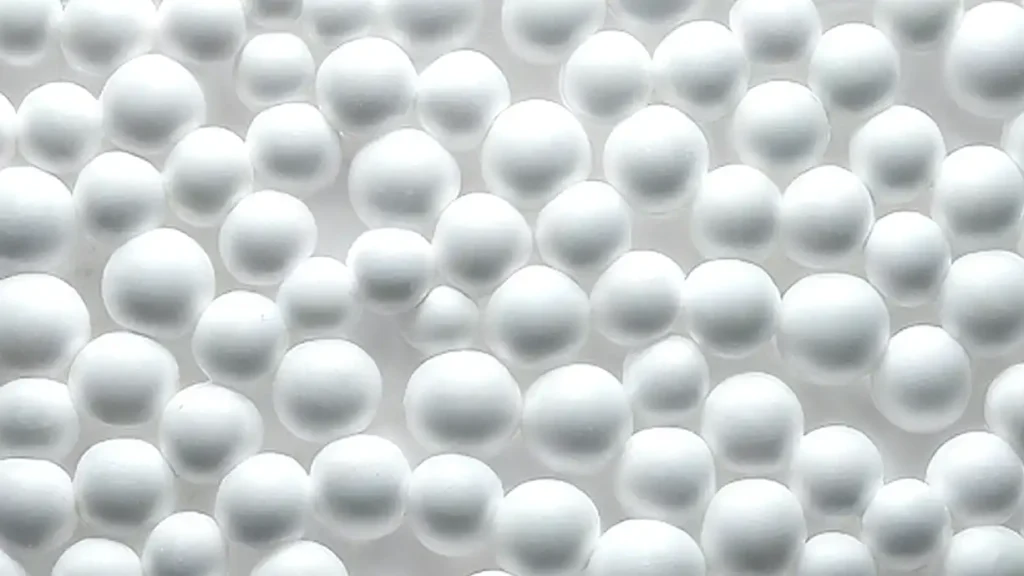
High-density expanded polystyrene (EPS) refers to EPS foam with a higher density compared to standard EPS materials. It typically has a density of over 30 kg/m³, although specific densities may vary depending on the manufacturer and application requirements.
High-density EPS offers increased strength, durability, and insulation properties compared to lower density EPS materials, making it suitable for applications where greater structural integrity and thermal resistance are needed. Examples of applications for high-density EPS include insulation for buildings, thermal packaging for temperature-sensitive products, and structural components in construction and engineering projects.
Here’s a table illustrating the density ranges for different types of expanded polystyrene (EPS) foam:
| EPS Type | Density Range (kg/m³) |
|---|---|
| Very Lightweight EPS | 10 – 15 |
| Lightweight EPS | 15 – 20 |
| Standard EPS | 20 – 30 |
| High-Density EPS | 30 – 40+ |
This table provides an overview of the density ranges commonly found in various types of expanded polystyrene foam. Keep in mind that specific densities may vary depending on the manufacturer and application requirements.
Applications of Different Expanded Polystyrene Density
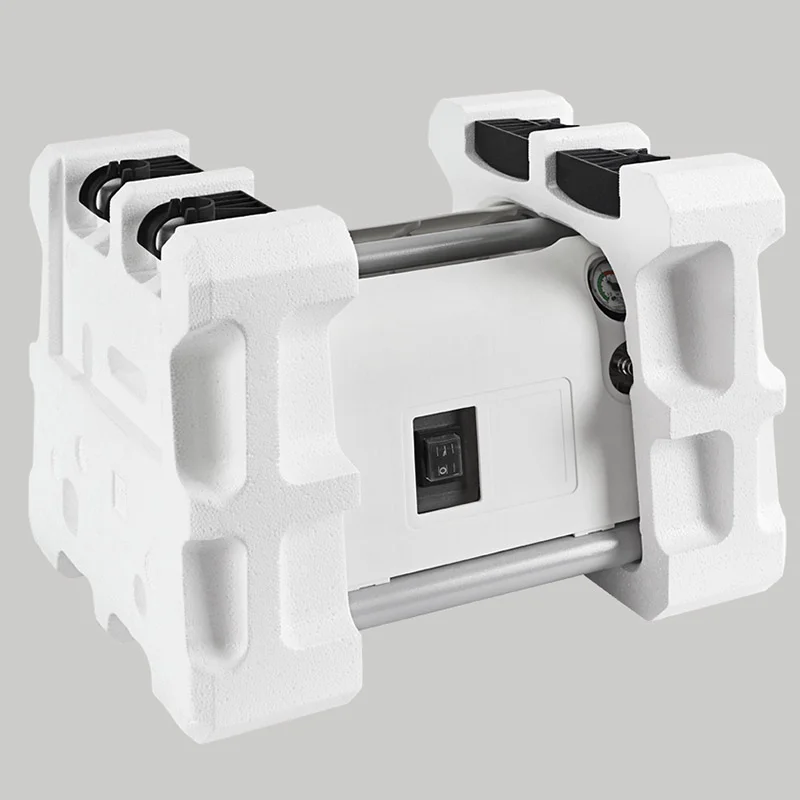
Low Density EPS

Medium Density EPS
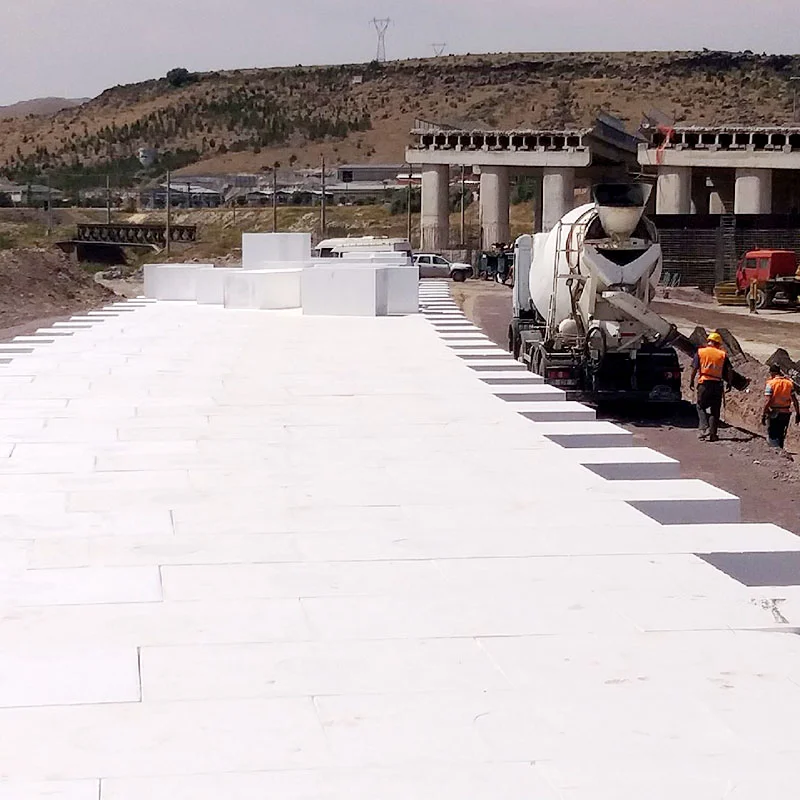
High Density EPS
| Industry | Product | Low Density (0.5 – 1.0 lbs/ft³) | Medium Density (1.0 – 2.0 lbs/ft³) | High Density (2.0+ lbs/ft³) |
| Packaging | Protective Packaging | Fragile items, electronics, glassware | Moderate-weight products, consumer goods | Industrial equipment, automotive parts |
| Void Fill | Shipping boxes, containers | Packaging inserts, cushioning materials | Heavy-duty packaging | |
| Insulation | Refrigerator Insulation | Lightweight, thermal insulation | Energy-efficient, thermal comfort | Structural integrity, thermal stability |
| Wall Insulation | Lightweight, temporary structures | Residential, and commercial buildings | SIPs for energy-efficient construction | |
| Construction | Architectural Foam | Decorative elements, lightweight | Aesthetics, trim work | Lightweight fill material, facades |
| Formwork | Concrete casting, rapid construction | Labor reduction, cost-effective | Structural support, stability | |
| Specialty | Buoyancy Aids | Marine applications, flotation devices | Water sports equipment, impact resistance | Model making, prototyping |
| Stage Props | Event decorations, theatrical sets | Themed decorations, film production | Creative projects, entertainment venues |
This table outlines how EPS foam of different densities is utilized across various industries for specific products. Low-density foam is typically used for lightweight applications where cushioning is essential, medium-density foam offers a balance of strength and weight for insulation and construction purposes, while high-density foam provides structural integrity and durability for heavy-duty applications.
FAQ
How can EPS density be adjusted during production?
EPS density can be adjusted by controlling factors such as steam pressure, temperature, dwell time, bead size, mold conditions, and chemical additives during the manufacturing process. These parameters can be optimized to achieve the desired foam density for specific applications.
Is EPS density directly related to its insulation performance?
Yes, EPS density is directly related to its insulation performance. Higher-density EPS typically provides better thermal insulation due to its reduced porosity and increased material density. However, the specific thermal conductivity of the EPS material also influences its insulation properties.
Can EPS density affect its recyclability?
Yes, EPS density can affect its recyclability to some extent. Higher-density EPS may have a greater material density, making it more challenging to process and recycle compared to lower-density foams. However, advancements in recycling technologies are enabling the recycling of various EPS densities.
Are there industry standards for EPS density?
Yes, there are industry standards and specifications that define acceptable ranges of EPS density for different applications. These standards may vary depending on regional regulations, product requirements, and end-user preferences.
How can I determine the appropriate EPS density for my application?
The selection of EPS density depends on factors such as the desired insulation performance, structural requirements, budget constraints, and environmental considerations. Consulting with EPS manufacturers or industry experts can help determine the most suitable density for your specific application.
Conclusion
In conclusion, understanding Expanded Polystyrene (EPS) density is essential for maximizing its potential in various applications. The article has shed light on how EPS density impacts its properties, including thermal insulation, compressive strength, and water absorption.
By comprehending the factors influencing EPS density and the production processes for different densities, manufacturers can tailor EPS foam to meet specific requirements across industries. From packaging to construction and specialty applications, EPS foam of varying densities offers versatile solutions.
As technology advances and recycling efforts improve, the versatility and sustainability of EPS foam continue to evolve. With a clear understanding of EPS density and its implications, stakeholders can make informed decisions to leverage the full potential of this versatile material.
